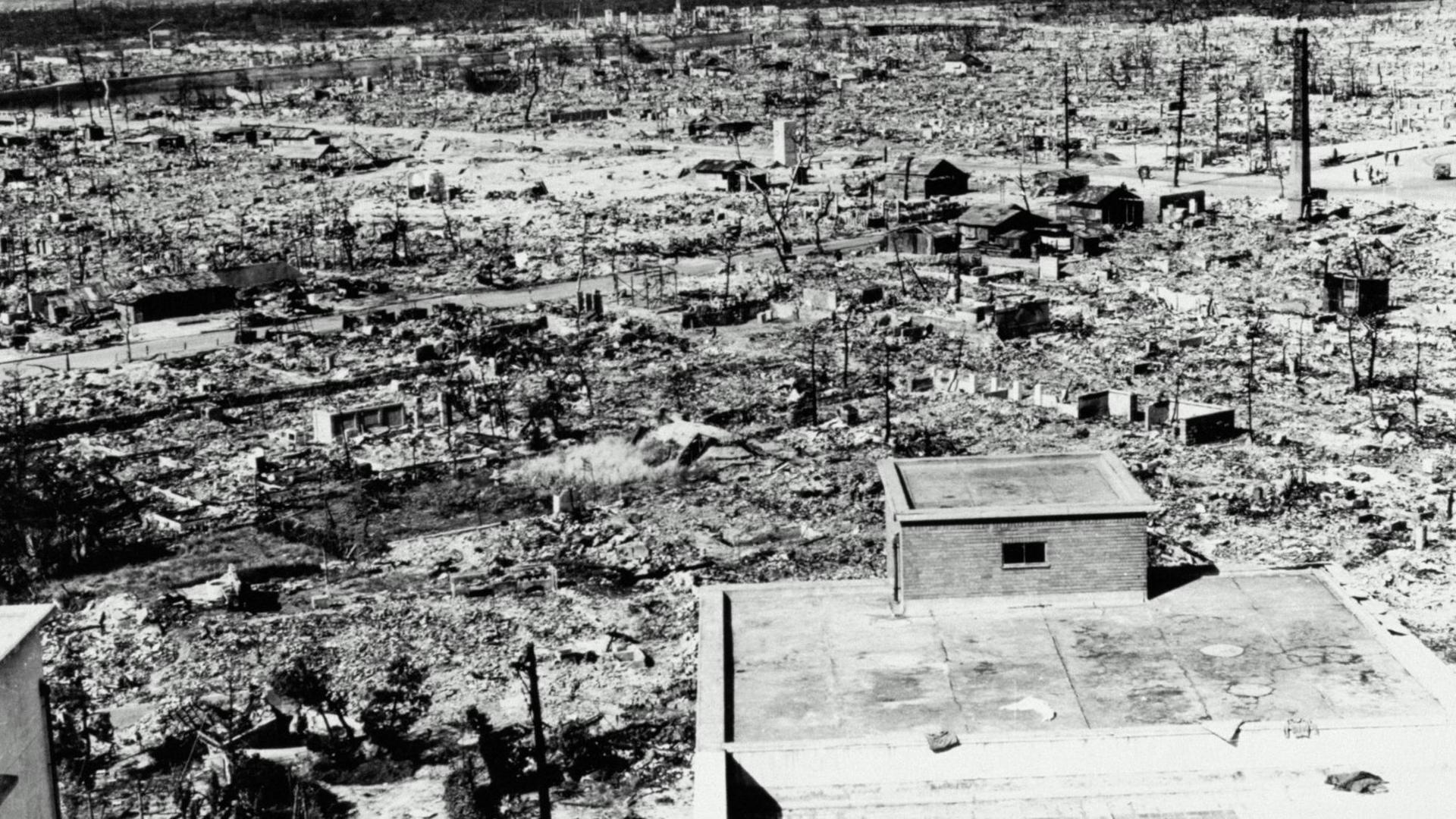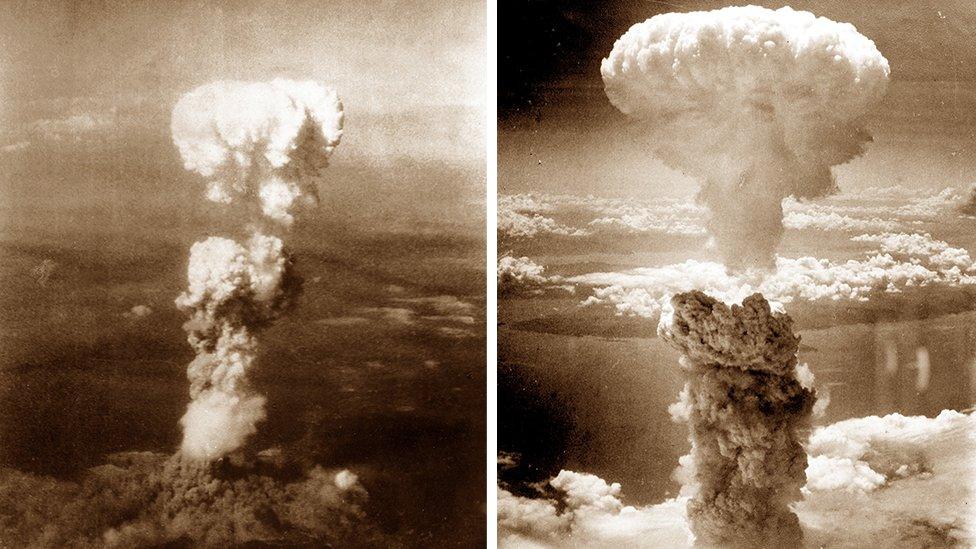Hiroshima sapling planted in university peace garden

The sapling was donated by a former university Peace Studies graduate
- Published
A sapling grown from the seed of a tree that survived the Hiroshima atomic bomb has been planted at the University of Bradford.
Donated by a former Bradford University graduate, Richard Outram, the ginkgo tree seedling marks 50 years of the study of peace at the university.
Mr Outram is secretary of the UK and Ireland Mayors for Peace, a network of thousands of cities and towns that work to promote peace and call for the abolition of nuclear weapons.
The organisation has already planted 16 saplings in other towns but - as a former Peace Studies graduate - Mr Outram said the Bradford planting held particular significance for him.

The atomic bomb destroyed thousands of buildings in Hiroshima in August 1945
Around 80,000 people were killed as a direct result of the bomb in 1945, with tens of thousands injured - many of whom consequently died.
Mr Outram said: "Some of the trees around the epicentre of the blast, a point above Shima Hospital, amazingly survived, and not only survived but thrived."
He said the planting in the university's Peace Garden symbolised hope that "there must be a nuclear-free and peaceful world if our planet is to survive".
The mother tree of the Bradford sapling, which was left slanted by the blasts, is estimated to be around 200 years old. It is located in Shukkeien Gardens, once the formal garden for the exclusive use of the lord of Hiroshima Castle. The castle was destroyed in the blast but has since been rebuilt.
Follow BBC Yorkshire on Facebook,, external X (formerly Twitter), external and Instagram., external Send your story ideas to yorkslincs.news@bbc.co.uk
Related topics
- Published9 August 2020
